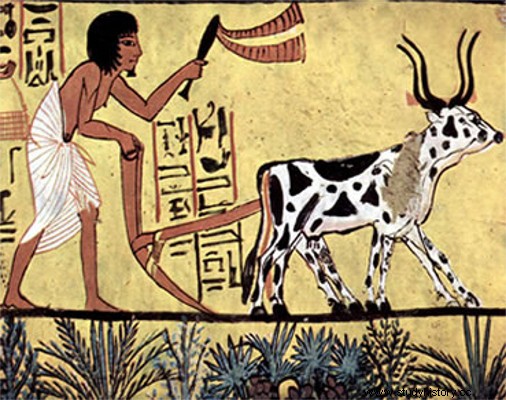
By Lilian Aguiar
The economy in Ancient Egypt was based on agriculture. The Nile River, with its floods, was a godsend to the Egyptians. The cultivated lands belonged to the Pharaoh, considered by his people to be king, God and absolute lord, but they were controlled by the priests, scribes and military chiefs who administered the free workers and slaves who cultivated the land there.
One of the characteristics of the Egyptian economy was the centralizing power of the State in the figure of the Pharaoh. At the Emperor's request, artisans were required to build temples and manufacture weapons for the army. As a result, foreign trade became the possession of the State, as it alone had too much material for export.
The cultivation of flax, cotton, vines, cereals and olive trees was common. The most used animals in this period were the ox and the donkey, but there was the creation of sheep, goats and geese. The use of the horse only occurred in the ninth empire, and the camel, animal symbol of Egyptian civilization, was only used in the time of Ptolemy. Despite agriculture being the main economic base, ceramic, mining and textile industries already existed in small numbers.
The Egyptian peoples traded across the Mediterranean, it seems, were the forerunners. The raw material for the construction of the boats came from Phoenicia and the payment was based on the exchange of art objects and precious metals. Egypt also maintained trade relations with Arabia and India.
The Greeks provided plants that would serve as one of the raw materials used in the mummification process. Through a trading post on the left bank of the Delta, the commercial establishments that existed there carried out exchanges, such as wine, olive oil, ceramics and some metallurgical products for the wheat that was lacking in their cities of origin. Small internal commercial operations were carried out by direct exchange, there were no coins, but copper and gold objects with stable weight circulated.
Take the opportunity to check out our video lessons related to the subject:
